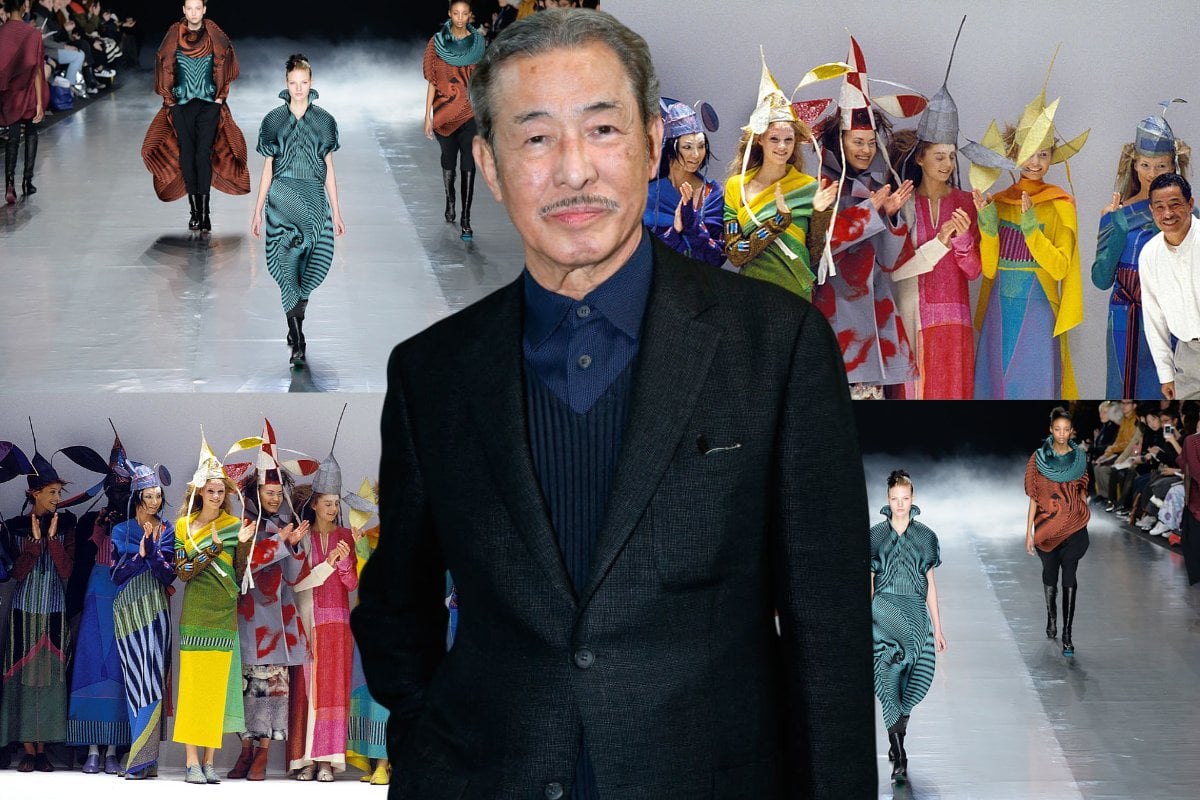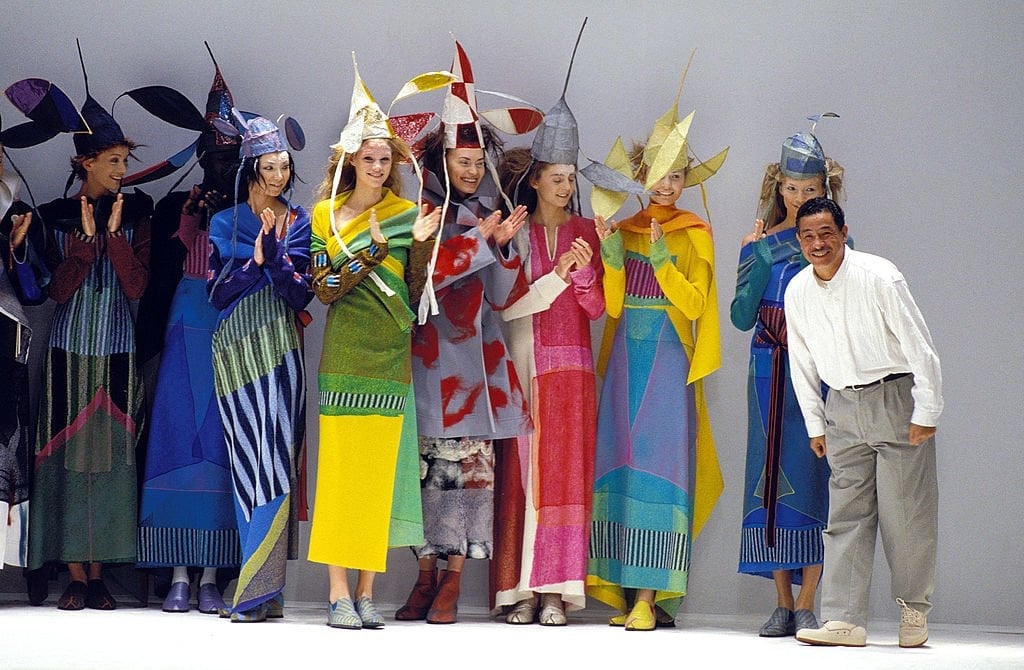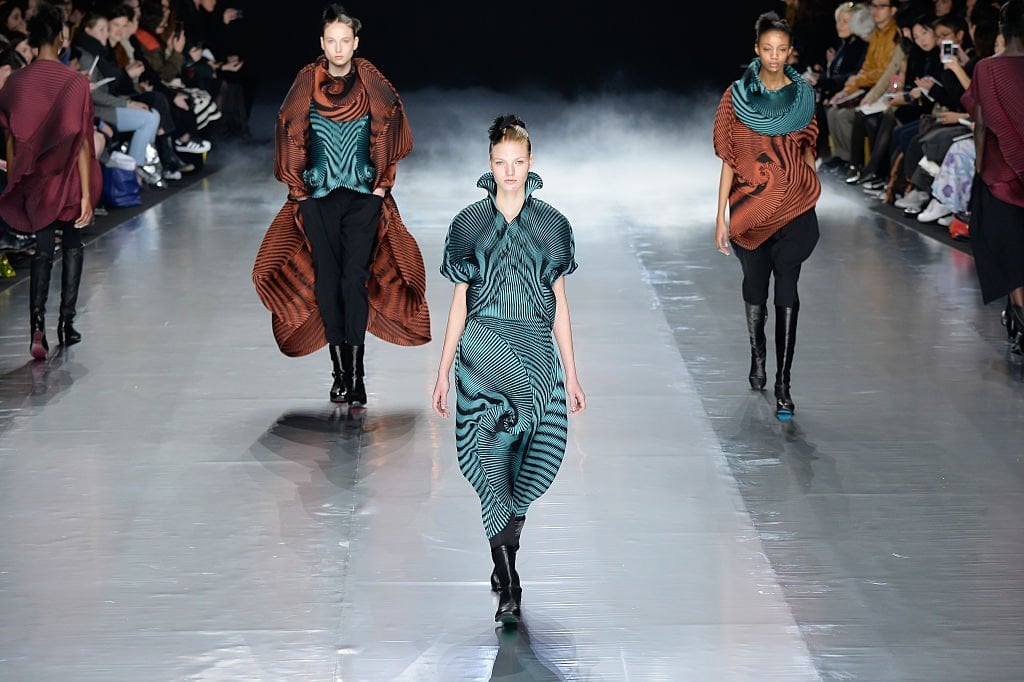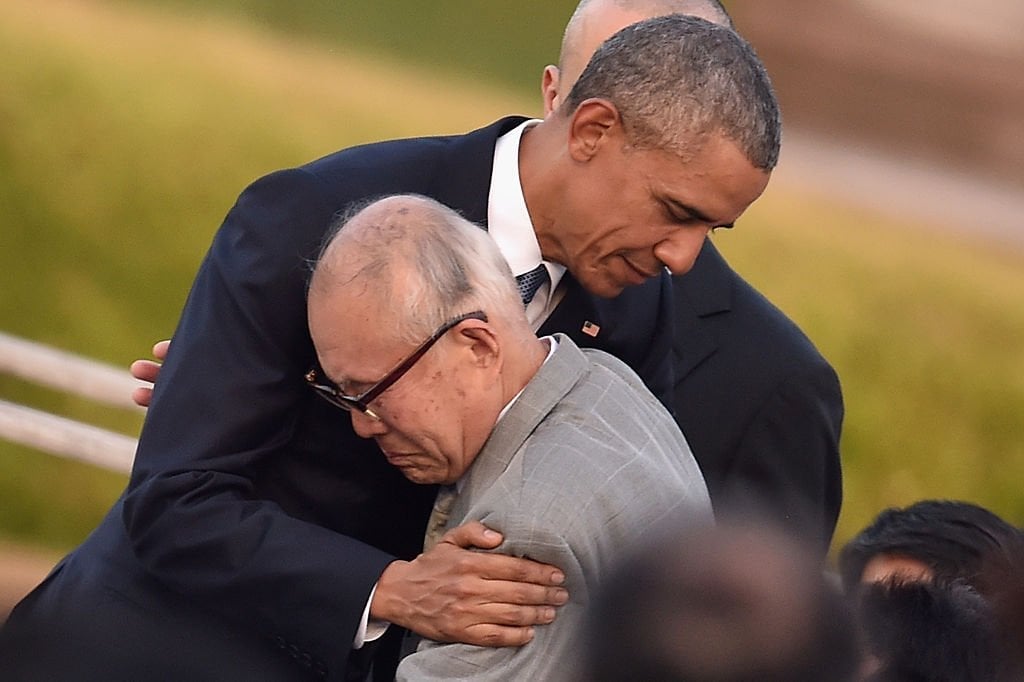
At 8.15am on August 6, 1945, there was a blinding flash of light above the town of Hiroshima, Japan.
The atomic bomb, dropped by the US in the dying stages of World War II, would kill more than sixty thousand people that day – and shatter the lives of hundreds of thousands more left behind.
One of those survivors was a seven-year-old boy named Issey Miyake, who was riding his bicycle to school when the bomb dropped.
"When I close my eyes, I still see things no one should ever experience: a bright red light, the black cloud soon after, people running in every direction trying desperately to escape. I remember it all. Within three years, my mother died from radiation exposure," Miyake would go on to write in a 2009 op-ed in The New York Times.
By then, he was a world-famous fashion designer. And up until then, he had never spoken – publicly, at least – about what had happened on that terrible day in Hiroshima.
Listen to Mamamia's daily podcast, The Quicky. Story continues below.
If you don't recognise Issey Miyake's name, there is a high chance you recognise his work.
You have probably worn his perfume: A Drop D'Issey or Fusion D'Issey. You've likely seen his signature pleats on both runways and in stores.
And you definitely know of his turtleneck – after all, it became the staple clothing of late Apple co-founder Steve Jobs.



